A practical guide for the donors and funding recipients of our time [Forthcoming Book]
It’s About Equal Partnership
The Age of Global Giving is about the new relationship between donors and funding recipients. The importance of building an effective relationship is vital because opportunities for donors and ministry workers to collaborate are greater today than ever before. This has much to do with the globalization of mission and ministry now in the 21st Century. Western mission agencies are undergoing reinvention, and partnership is the key theme. They no longer want to go it alone. Instead, they are looking for ways to collaborate with other agencies all over the world, and financial partnership is not a small factor in this new era. How will donors be received in the new scheme of things?
It’s About Reforming Missions and Ministry
The age of global giving is also a time of reformation in mission and ministry funding. The Church at large is reassessing their role in ministry and missions. This follows two hundred years of division between who were considered ministers or missionaries and who were the helpers of those two official categories. The helpers were known as the laity. The innovators were those grassroots rebels known as the parachurch. The donors have been treated as the financial source for all, yet somehow never officially part of either. That was not the case in the early modern missions movement. Now many donors are beginning to think and act like the shrewd managers that Jesus talked about. They are bypassing traditional church agencies and even parachurch ministries to form partnerships directly with national agencies in other countries. They are doing this for one purpose: to see greater outcomes with the use of their funds.
It’s about the new missiology
Mission strategies during late modernity have focused mostly on social sciences, such as cultural anthropology and sociology. The underlying assumptions these fields are based on (structuralism) have had no small impact on how mission and ministry was planned and carried out. The language of missions had boundaries. Now we hear talk, mostly from North America, about business plans, strategic planning, benchmarks, and metrics in mission and ministry. Such talk is discomforting to the status quo, understandably so. The traditional boundaries of what constitutes a good mission strategy are being pushed. How will the gatekeepers respond?
It’s about finding ways to develop effective and lasting relationships
If people understand the times and realize that God has called all believers as equal ministers in his mission to work together as one body, then mutual respect and humility should be the starting point for building effective partnerships. Regardless of official or unofficial standing, moving missions forward in the 21st century requires a refreshed understanding of what constitutes “church”, and how the Church at large can work together more effectively. Tools are required. Sound planning, agreeing what success looks like, with reporting and mutual accountability will enable such partnerships and bring about what all people want: positive, significant, and lasting impact. The book provides a guide, with tools, for developing formal partnerships in a number of key areas.

